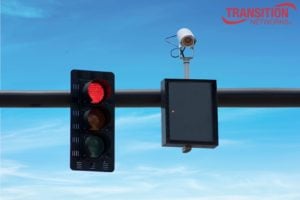Transition Networks to Connect and Power over 10,000 Traffic Intersections in New York City that Include Traffic Cameras and Monitoring Sensors for Intelligent Transportation Infrastructure
Transition Networks recently announced the start of a significant intelligent transportation  project with New York City’s transportation agency to connect, power and manage traffic data via its hardened TAA-compliant, Power-over-Ethernet (PoE+) switches. This application brings intelligent transportation infrastructure citywide and reinforces the relevance and timeliness of Transition Networks’ strategy of developing smart city Internet of Things (IoT) solutions. Transition Networks is working with a major North American telecommunication services company on the deployment of the solution.
project with New York City’s transportation agency to connect, power and manage traffic data via its hardened TAA-compliant, Power-over-Ethernet (PoE+) switches. This application brings intelligent transportation infrastructure citywide and reinforces the relevance and timeliness of Transition Networks’ strategy of developing smart city Internet of Things (IoT) solutions. Transition Networks is working with a major North American telecommunication services company on the deployment of the solution.
Today, intersections have more than traffic signals. As more transportation agencies look to use actionable intelligence to monitor trends and improve service, they are deploying technology to assess traffic congestion, safety and pedestrian counts. Transition Networks’ PoE solution will connect and power cameras and sensors at over 10,000 traffic intersections that collect this vital information. In addition, key features on the Transition Networks’ switches will save the agency time and costs associated with maintenance.
Currently, if a device stops working at an intersection, the agency must take multiple actions prior to deploying a repair technician. This includes scheduling a technician to evaluate the issue and deploying a bucket truck to reach the device. Once the technician is at the site, the lane closures cause significant stress and traffic delays for motorists. Many times the fix only requires a reboot of the device. Transition Networks’ Auto Power Reset (APR) feature provides the ability to remotely reboot or manage Transition Networks’ equipment fixing the issue within minutes and eliminating all of the lane closure requirements. This feature alone will save the agency significant costs and lessen traffic disruptions by reducing the need to send a technician to inspect equipment. Continue Reading



.png?width=58&height=58&name=X_logo_2023_(white).png)
